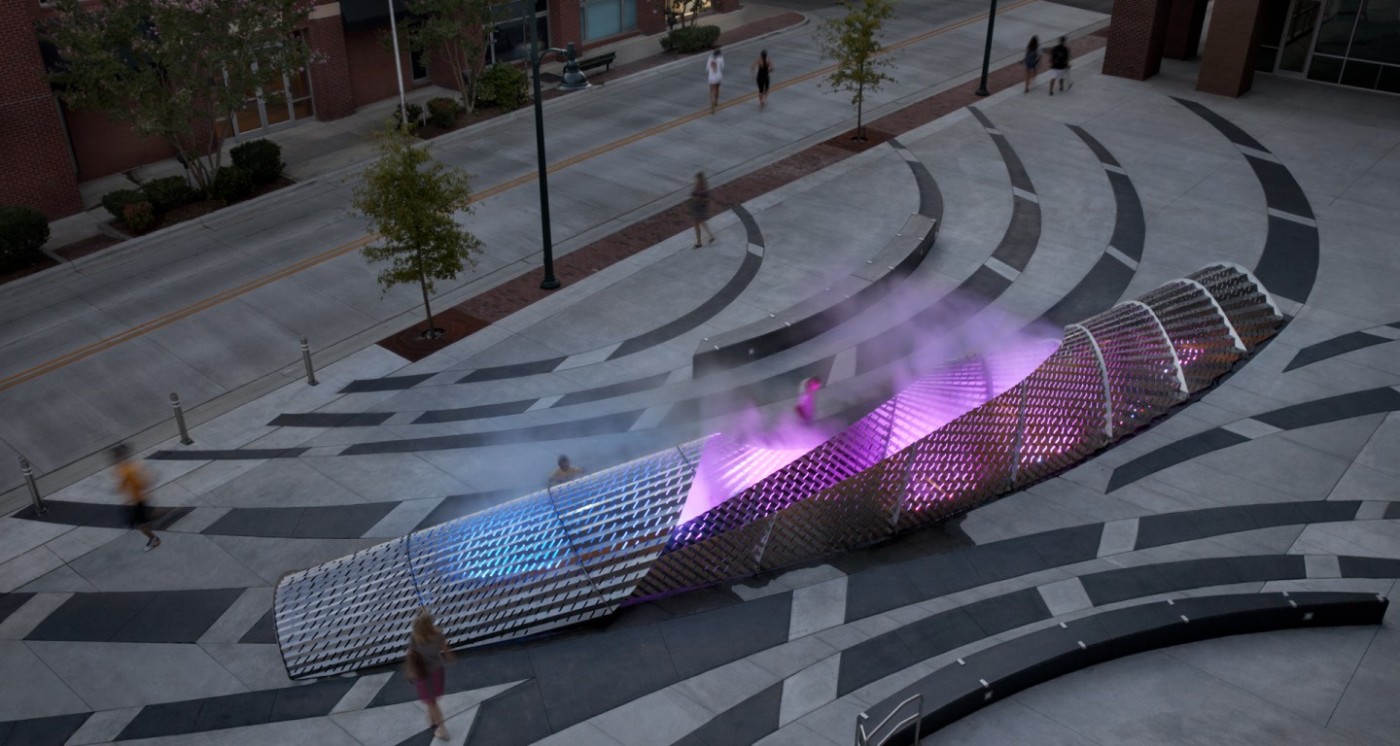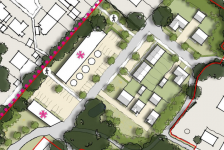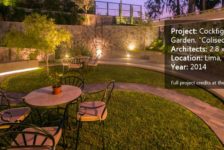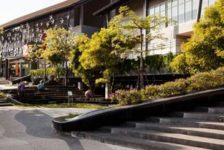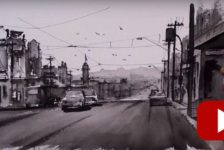Innovation is time consuming, mentally challenging, and potentially unpromising. So why do some designers put in so much of their time and effort without a promise of success? What drives design innovators and what are they looking for? Innovators are unique individuals. They are often driven by an internal desire to press forward into the unknown and take calculated and, at times, foolish risks with the hopes of making life more prosperous, cities more intelligent, tools more functional, and humanity happier.
They are individuals that “trace the edges” (Cantrell) of contemporary and emerging technologies, theories, and practices. As our cultures continue their ever maddening and relentless march onward, the individuals highlighted in Innovations in Landscape Architecture are on the frontlines of innovation seeking answers to questions without answers. They seek to challenge the everyday and stretch the boundaries of design. In Innovations in Landscape Architecture, Jonathon R. Anderson and Daniel H. Ortega curate a diverse set of essays on progressive toolsets, processes, and provide four innovative profiles.
Innovative Tools
Technological innovation is one of those realms which can be exciting and at the same time, emotionally defeating. Technological innovation often introduces toolsets and knowledge well before a need might exist or before the results can be fully understood, realized and integrated into society. Because of this, some may see projective ventures as fruitless endeavors which lack relevancy. At times, innovations are developed in one field where they lack relevancy. Later, they may be introduced into another field where their full potential is actualized.
Surely Olmsted was heavily criticized by some for his innovations in performative landscapes such as the Back Bay Fens. It wasn’t until the past fifty years that we truly have begun to understand the value of ecological systems design in the realm of urban environments. It is this forward thinking that explores beyond current knowledge and understanding, and which reveals the unknown. These discoveries propel us forward.
 Dynamic Deleware – PEG Office +Landscape Architecture
Dynamic Deleware – PEG Office +Landscape Architecture
In section one, Innovative Tools, a variety of emerging toolsets, their current uses, and their perceived value and trajectory within our field are explored. As designers, we have a distinct relationship with our tools. They evaluate, illustrate, analyze, project, and manipulate our media; the landscape. A few key themes flow through the seven chapters in section one.
- Data as landscape. Landscape architects now have at their disposal several datasets and tools to collect data. But what should they do with this data? To what end should we collect, analyze, interpret, and project meaning? Should we only gather data as a means for reflecting the existing states or their potential to project futures accurately? Data is quickly becoming a real part of our physical and cultural landscapes. It is dynamic and flowing in our cities and homes.
- The agency and role of landscape architects and landscape architecture. A few authors claim that designers have an ethical obligation to treat these tools as something which are embedded with a degree of agency. But is it the role of landscape architects to direct this power?
- Role of users to the digital interface. If designers have influence over the shaping of our environment, then certainly these designs are also a byproduct of the user interfaces found in our toolsets. This begs the question, are our user interfaces designed to function in a way that promotes the clear and honest influence of our humanity into our designs or are they restrictive, leading to an impure translation of values and design intent?
- Representation as communication. We are currently in a representation rich time in the world of design. Two points are made in this section which seek to expand and thicken the meaning and purpose of design representation. In one chapter, we are challenged to create drawings which are “accessible” and which have agency to create ethically informed change. But is it the responsibility of the designer to “reveal hidden factors”? For it is known that “what we see and share is what we talk about and design” (McCown & Zawarus). In another chapter we are challenged to use representation to communicate dynamics and change. If the information we model and represent is dynamic, then our representations should begin to harness this dynamism in a way that communicates change, fluidity, ranges, and movement.
Innovative Processes
Tools are not the only thing which develop over time. Processes, theories, and ideation also should be developing over time. Like financial investing, knowledge compounds over time. As ethics, politics, regulations, and cultures develop, it is inevitable that creative processes which direct the design of landscapes develops simultaneously. The essays presented in section two each challenge conventional thought, seek to expand existing processes, and aim to bring together disparate ways of seeing the world.
This past decade has seen an explosion of events worldwide. This is no more evident than in our political landscapes and our ethnic landscapes. But what does this have to do with landscape architects and design? Some designers believe that landscape architecture is imbued with a high degree of agency which not only reviews and interprets our surroundings but that it has the power to respond to dynamic sociocultural process as a creative catalyst for design generation (Hirsch). This takes current understanding a step further than most people allow. In past decades, we have recognized the ability of landscape design to provide contextual relevance. But now we are beginning to see landscape design as something that can change and direct culture and society.
 Informal Urban Communities Initiative
Informal Urban Communities Initiative
“The hope is here to frame landscape architecture as an interpreter of culture; not as a neutral or scientific analysis or a means to sustain the status quo, but an imaginative interpretation that challenges people to think beyond the conventions of familiar expectation – from ‘what is’ to ‘what could be.’ (Hirsch)
Hirsch writes, as did Mayer, that there is a responsibility on the designer to reveal the identity of a site and not merely camouflage it from its historical identity. In a world where we are asked to simply maximize the buildable area of a site and provide value into a site, we may be losing the preexisting value of place and historical context which can influence future development.
“Culture is the agent, the natural area is the medium, the cultural landscape the result.” (Sauer, 1985)
Innovative Profiles
Anderson and Ortega did not stop at technological trends and speculative ideologies when writing this book. They provide a few brief interviews of current professionals and university programs. Respondents were asked five questions.
- How do you understand design innovation?
- How has innovation evolved your practice/program?
- To what level does interdisciplinary define innovations?
- How do you create a platform or infrastructure to facilitate innovation? Have you critically examined or assessed this?
- What role does innovation play in our future practice/education?
This is certainly one section in the book that could have been significantly expanded. A variety of ideologies were presented in response to the five questions. One such hot topic was the mixing of professionals within the design disciplines. This is a rising trend in design colleges across the nation where we see architecture students designing performative landscape, green roofs, and urban spaces and landscape architects are designing site furnishings and structures which blur the boundaries of the inside and outside. While one respondent expressed their preference to collaborate and live with invisible boundaries in practice, another expressed a firm belief that one should first develop a strong sense of self identity found in their respective disciplines. Respondents also varied in their responses to the value which a participant brings to the table in collaborative works.
“While we are completely invested in listening to the community members, we also work hard to let them know that we bring an expertise to the table, and that expertise is what will manifest their stories into that visual and experiential part of their community.” (Mikyoung Kim)
Over all, the book has an excellently curated selection of innovative tools, processes, and profiles. It certainly could be expanded to additional volumes and extended over time. A few chapters are inaccessible and lack clarity, but after heavy critical reading, one can eventually tease out primary concerns and meaning. If you find yourself looking to expand your knowledge on current and developing tools and processes, this is definitely the book to read. Cover to cover, the pages drip with innovation and will challenge and inspire you to “trace the edges”.
—
Cameron R. Rodman, Associate ASLA, is a Landscape Designer at Stewart Inc., a multi-disciplinary design firm in Charlotte, NC. Cameron is also currently a writer for Land8.com and writes on a variety of topics including event coverage, GIS awareness, book reviews, and current landscape architecture designs. Cameron recently completed a year long term as the National Student Representative to the ASLA Board of Trustees where he enhanced social media communications, chapter president training, and student-professional engagement. Cameron’s current work includes a variety of projects ranging in site scale and programming requirements. At Stewart Inc., Cameron is helping lead the development and implementation of GIS tools as a means of site analysis, site design, storytelling, and public engagement. .




